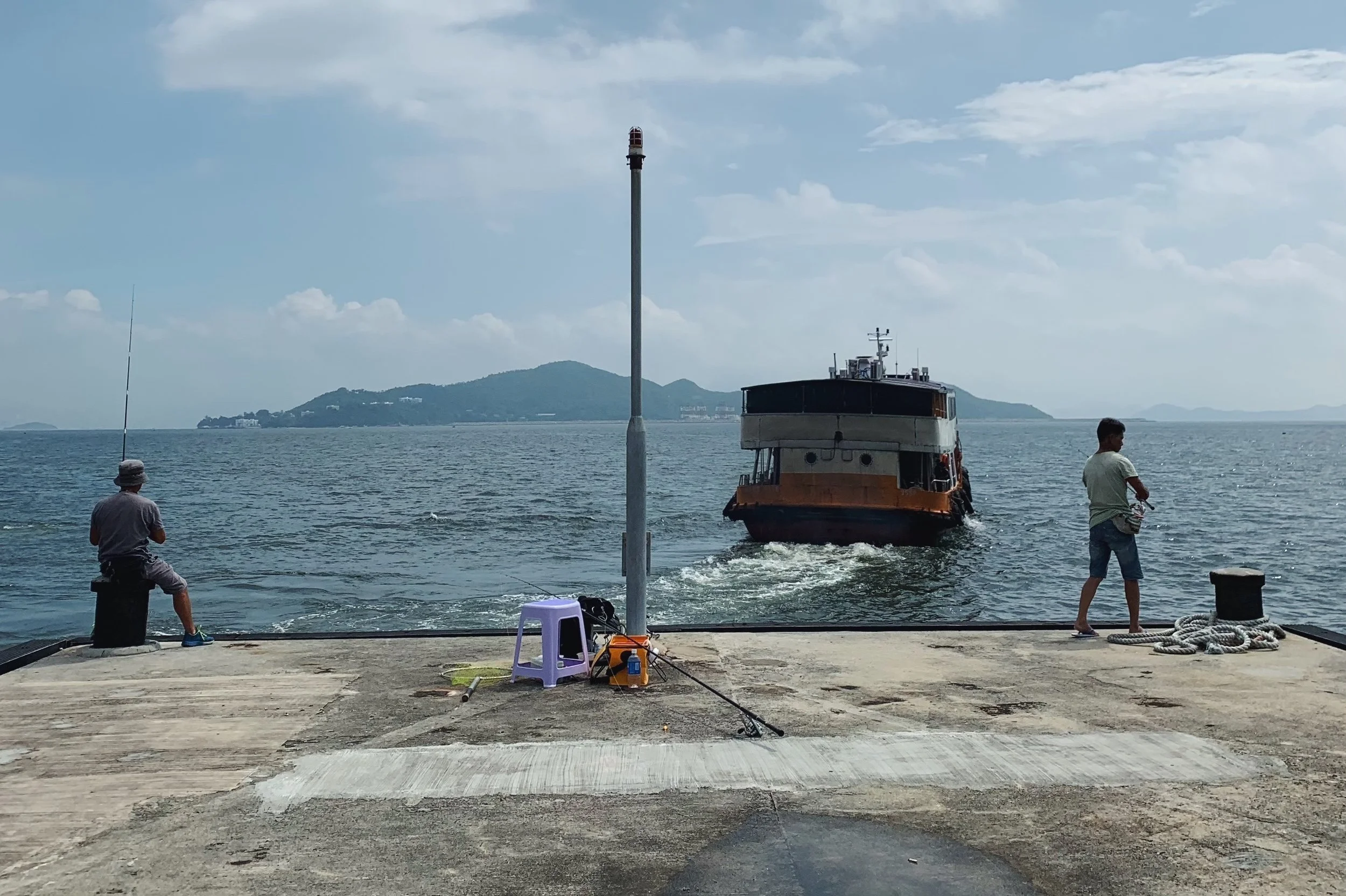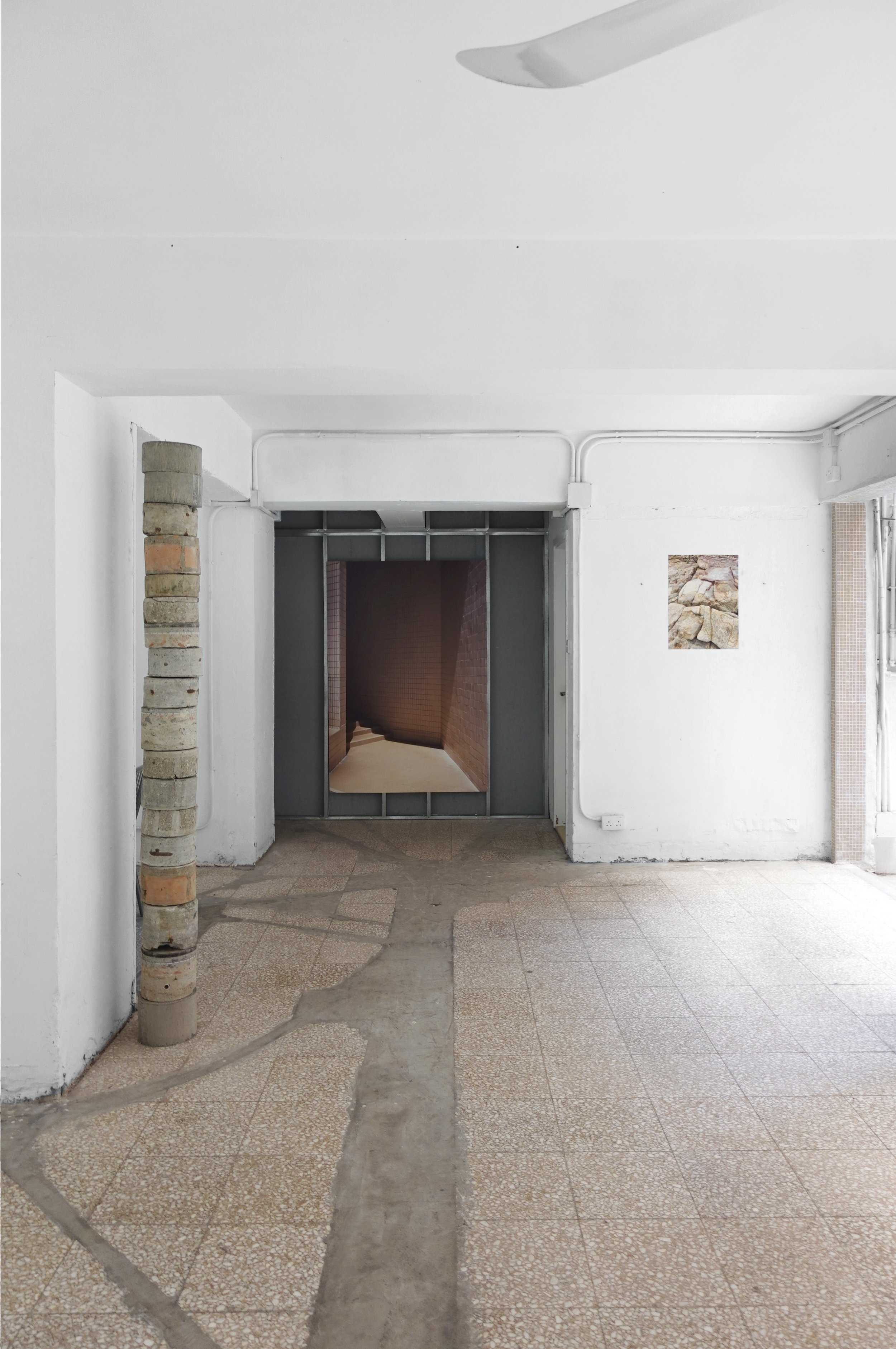The installation Foraged: Archiving Material Time is part of the exhibition at the Hong Kong Pavilion titled ‘Projecting Future Heritage: A Hong Kong Archive’ curated by Fai Au, Ying Zhou and Sunnie Yau, for the 19th International Architecture Exhibition, La Biennale di Venezia 2025.
Read MoreProject-based seminar at the Division of Landscape Architecture (DLA) attempting to represent the coastal landscape with all its dynamism and complexities. Through 1:1 material experimentation and iterative on-site observations of Nga Kau Wan Beach’s dynamic topography and atmospheric conditions, the course merges design inquiry with ecological processes.
Read MoreThe installation Foraged was part of a group exhibition titled ‘Fragments of curiosities’ at Hart Hause in Hong Kong and was curated by Helena Halim. This installation merges found materials and objects into furniture brining the past into the future. If architecture is landscape in flux, then materials are the direct representation of this dynamic process.
Read MoreStudio at Division of Landscape Architecture (DLA) is structured around research and design strategies to mediate and protect Chi Ma Wan Bay, and particularly to mitigate developer’s search of the ‘sea view’ – the ultimate consummation of the environment by the market. Using primarily resources found on site, that be abandoned buildings, dysfunctional infrastructure or discarded materials, students pushed the boundaries of repair and scarcity as design strategy to imagine more regenerative and resilient future for coastal communities of Hong Kong.
Read MoreMaterial foraging, exploration and making in the response to the eruption of undersea Fukutoku-Okanoba volcano.
Read MoreExhibition, panel discussion and a publication providing an alternative set of references to the built and natural environment and a note on Hong Kong’s persistent redevelopment. Through various mediums such as writing, photography, conversations and installations, this work investigates the city’s modern architectural language together with its atmospheric condition, through a visual atlas of urban forms and geometries, materiality and historical narratives.
Read MoreProject developed by Urban Ecologies Design Lab at Faculty of Architecture, The University of Hong Kong, in collaboration with Habitat for Humanity Hong Kong, examines how the thousands of underutilised buildings that are temporarily vacant or awaiting lengthy redevelopment processes could be used to generate quality housing spaces in accessible locations, improve existing housing stocks, and provide crucial community spaces in areas with the highest concentration of population in need of social services.
Read MoreFuture Fossils for Ukraine (FFFU) is a limited edition of ten Future Fossils made and sold to help refugees fleeing Ukraine after the beginning of Russian invasion. 100% of the proceedings were donated to Grupa Granica operating on the eastern border of Poland.
Read MoreStudio aiming to employ regenerative design as a principle to imagining strategies for sustainable developments of underutilised water-based urban areas in Hong Kong. Working with topics such as food systems, spatial homogeneity, amplifying nature, and disappearing heritage of water communities, in the context of commodity-based, capitalist society, facilitates in-depth understanding of current urban, social and environmental urgencies and possible/impossible ways of addressing them.
Read MoreSeminar aiming to enable student’s awareness and in-depth understanding of the perception modes and spatial typologies of complex interior environments. Questioning standard tools for perceiving and data collection, paired with mapping selected public ferry piers, facilitates revealing the condition of the space, and the expression of it’s interiority. Image: Krzysztof Wodiczko displaying Personal Instrument (1969), Warsaw, 1972.
Read MorePerformative and reflective walk from Mui Wo to Chi Ma Wan on Lantau Island at the Inter Island Festival, using the formation of the ferry pier as reference point for noticing aspects of Hong Kong insular culture, the pier typology and simply in enhancing perception of the landscapes, ecologies and social activities around it.
Read MoreExperimental interior design project of a coffee shop in Sham Shui Po. Through architectural inversion, use of materials, methods and qualities sampled from the outside, the interior constitutes the district’s exterior. Coupled with found and custom made furniture utilizing stone samples from materials library of closed down Interior Design School nearby, the space becomes a multidimensional material archive.
Read MoreArt objects capturing the moment of discovery when pieces of concrete, old tiles or bricks emerge from among pebbles and shells, highlighting the global problem of construction waste, building methods and materials that are neither reusable nor degradable.
Read MoreGroup exhibition response to the ‘Redistribution: Land, People and Environment’ theme of the Hong Kong Collateral Event for the 2021 Venice Biennale of Architecture.
Read MoreEsej oraz fotografie, unaoczniają wartości wschodu w dyspucie na temat utopijnych idei modernistycznych oraz ich zastosowania w miastach XXIego wieku oraz podejmują próbę wyjaśnienia dlaczego koncepcje i pomysły wywodzące się z Europy i Stanów Zjednoczonych (tzw. Zachodu) nie sprawdziły się tam skąd pochodzą, ale tak dobrze przyjęły się w Azji, a zwłaszcza w Hong Kongu.
Read MoreInterview based article about Hong Kong architecture and design firm MLKK, who with its core values of collaboration, mindfulness, peace and balance, emphasises craftsmanship and sustainability in every projects. Read the full story on Design Anthology Magazine
Series of six articles with visual stories about local modernism, the history of the region after the industrial revolution and its relationship with the present, aiming to translate to the wider audience the origins of the city’s urban language and raise a little more sympathy for the not always aesthetically pleasing dense city.
Read More















